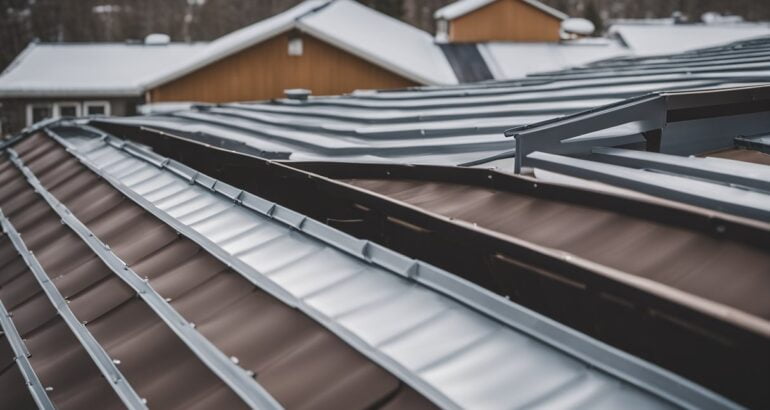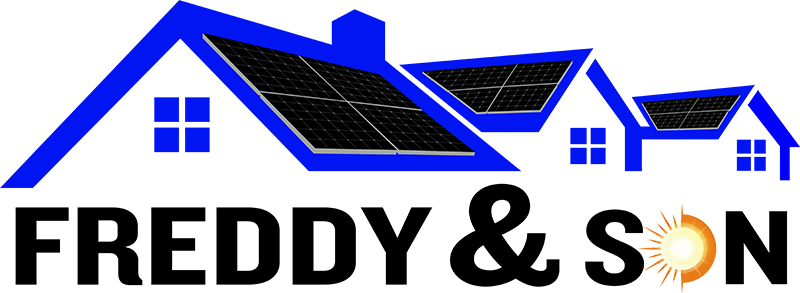
When it comes to roofing, the longevity and durability of metal make it an attractive option for many building owners. Whether an existing roof can support a new metal overlay is a practical one that concerns both residential and commercial property owners. A metal roof overlay involves installing a new roof over the existing one, which can be a cost-effective and less disruptive alternative to a complete tear-off and replacement. Let’s explore: can you overlay a metal roof?

Metal roof overlays are not a one-size-fits-all solution; they require careful consideration of the existing roof structure’s condition and load-bearing capacity. Two common systems are metal-over-metal and thermoplastic polyolefin (TPO) over metal. Retrofitting with a metal overlay can provide a long-term solution to roof leaks and increase the roof’s overall lifespan. However, building owners must evaluate the potential benefits against any structural limitations and long-term performance implications of adding an additional layer.
Installing a metal roof over an existing roofing system has several advantages. It can be a faster and more economical process with less waste and minimal disruption to building occupants compared to a full replacement. Moreover, metal’s lightweight nature generally doesn’t significantly increase the load on the underlying structure. However, the feasibility and success of a metal roof overlay depend on professional assessment and implementation, ensuring the supporting framework is sound and that the overlay is expertly fitted to withstand environmental forces.
Can You Overlay a Metal Roof? Exploring Feasibilities
An overlay of a new metal roof onto an existing one is often feasible, but it requires careful evaluation of the current structure’s integrity and adherence to regional building codes.
Assessing Current Roof Condition
Before overlaying a new metal roof, a thorough assessment of the existing roof’s condition is critical. One must determine the level of wear, identify any signs of damage like rust or structural disformity, and assess previous repairs. The presence of multiple layers from past overlays can also affect feasibility. If the current roof is compromised, it can’t securely support an additional layer, and a complete tear-off and replacement may be necessary.
Considerations for Adding a New Metal Roof Over an Old Roof
Weight: A primary consideration is the weight of the new metal roofing material in relation to the structural support of the building. Metal is lightweight compared to some materials, allowing overlays in some cases without overburdening the structure.
Building Codes: It’s essential to review local building codes, as some areas may limit the number of permissible roof layers or have other restrictions regarding overlays.
Roof Type Compatibility: When considering an overlay, ensure compatibility between the existing roof and the new metal roofing system. Different metals can react adversely when in contact, potentially leading to accelerated corrosion.
Installation: Proper installation is paramount for the success of a new metal roof overlay. Installation techniques might differ based on the existing and new materials, including considerations for thermal expansion, contraction, and securing methods.
Weather Conditions: Installers must consider local weather patterns before undertaking a metal roof overlay. Certain climates that are prone to extreme weather may pose challenges for overlays.
By meticulously considering these aspects, property owners can determine if a metal roof overlay is right.
Installation Techniques

Proper installation is essential for the longevity and effectiveness of a metal roof overlay. This process requires careful attention to preparing the existing roof surface, precise overlapping of metal roofing panels, and correct installation of boards when working with tin.
Preparing the Existing Roof Surface
The surface must be inspected for damage or irregularities before installing a new metal roof over an existing one. Any necessary repairs should be made to ensure a flat and sound substrate. The existing roof should be cleaned of debris and rust, and it should also be completely dry to avoid trapping moisture.
How to Overlap Metal Roofing Lengthwise
When installing metal roofing panels:
- Overlap Direction: Always overlap panels in the direction of the prevailing winds to reduce wind uplift.
- Overlap Amount: Lengthwise, metal roofing panels should overlap by at least one rib, commonly around 9 inches, to ensure a weather-tight seal.
Key Steps:
- Place the first panel accurately aligned with the roof edge.
- Ensure subsequent panels overlap the previous ones by one rib.
- Secure panels with fasteners at manufacturer-recommended intervals.
How to Install Boards Over an Old Tin Roof with New Tin
For a tin roof upgrade:
- Before installing new tin panels, wooden boards or purlins must be laid across the old tin.
Installation Process:
- Spacing: Spend purlins horizontally across the roof, typically 24 inches apart.
- Securing Purlins: Attach the purlins securely to the existing roof structure to support the new tin roof.
- Aligning New Tin: Place new tin panels over the purlins, ensuring they align correctly with the roof’s edge.
Remember, following manufacturer specifications and local building codes will always be critical for ensuring a successful metal roof installation.
Advanced Overlay Systems and Retrofitting

Upgrading an existing metal roof involves precise technologies and materials. Overlay systems and retrofitting solutions provide long-lasting remedies to roof deterioration without needing a full replacement.
Metal Roof Overlay Membrane Applications
Metal roof overlay membranes, such as Thermoplastic Polyolefin (TPO) applications, offer a lightweight and cost-effective method for enhancing roof longevity. TPO over metal roof applications are especially notable for their ability to provide a seal against leaks and add an extra layer of insulation.
- Advantages:
- Leak resistance
- Improved insulation properties
- Extended roof life
Metal Over Metal Retrofit Solutions
In a metal-over-metal retrofit, a new metal roof system is installed directly over the old one. This process eliminates the cost and hassle associated with removing the existing roof.
- Key Points:
- Enhances roof lifespan
- Prevents landfill waste from roof tear-off
- Often includes high-performance insulation between layers
- It can be applied to various types of existing metal roofs.
Tie-in Techniques for Existing Structures
Effective tie-in techniques are crucial in securely connecting the new overlay system to the existing structure. These techniques must be executed precisely to prevent water infiltration and maintain structural integrity.
- Considerations:
- Compatibility with the existing roof design
- Long-term durability and leak prevention
- Structural load assessments to ensure safety
Implementing advanced metal roof overlays and retrofitting systems demands a thorough understanding and careful application of materials and methods to extend the service life of metal roofing efficiently and effectively.
Maintenance and Coatings

Metal roofs are durable and long-lasting but require regular maintenance to retain these qualities. Coating applications serve as a preventative measure to shield the metal surface from environmental wear.
Applying Roof Coatings to Metal Roofs
Applying a roof coating to a metal roof is not only possible but can be highly beneficial. A roof coating can extend the life of a metal roof, improve its appearance, and add an extra layer of protection against leaks, corrosion, and temperature extremes. The type of roof coating used should be compatible with the metal and the climate in which it is situated. For instance, coatings are available that specifically address issues like UV resistance and thermal reflectivity.
Steps for Coating Application:
- Clean the roof surface thoroughly to remove debris and rust.
- Repair any damage, such as minor leaks, dents, or scratches.
- Apply the coating evenly over the entire surface, following manufacturer guidelines for temperature and weather conditions.
Long-term Maintenance Considerations
Regular inspections and maintenance are critical to a metal roof’s longevity and performance. Annual checks can identify potential problem areas, such as:
- Leaks
- Denting
- Scratching
- Corrosion
The owner or a professional should perform these checks to prevent minor issues from escalating. Maintenance might include cleaning the roof, reapplying sealants, tightening fasteners, and ensuring proper drainage. Consistent upkeep extends the roof’s life and can prevent costly repairs down the line.
Freddy & Son – Your Go-to Commercial Roofing Contractors in Virginia
Freddy and Son stands as the go-to commercial metal roofing contractor in Virginia, offering unparalleled expertise and a commitment to excellence. With a team of highly skilled metal roof installers trained in the latest techniques, they deliver reliable, durable, and cost-effective solutions for businesses across Virginia, Maryland, Washington D.C., and Pennsylvania.
From new installations to replacements, scheduled maintenance, and emergency repairs, Freddy and Son ensure the longevity and protection of commercial buildings.
With a focus on environmental friendliness, energy efficiency, and long-term investment, Freddy and Son emerge as a trusted partner, offering peace of mind through Labor and Manufacturer Warranties. Choose Freddy and Son for expert roofing solutions that elevate your property and ensure its safety and operational efficiency.



